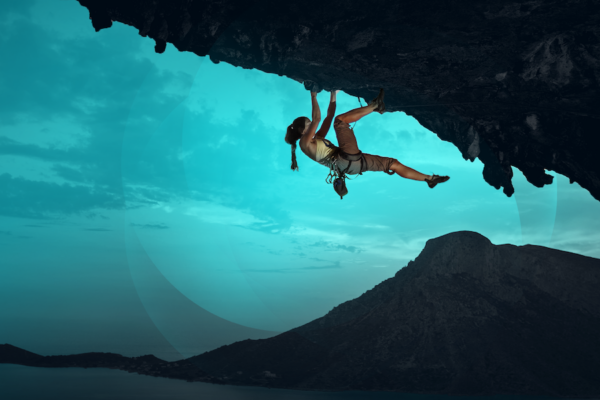 Wouldn’t your business love 100,000 fans on Facebook? You might only dream of that, but Kevin Bowler walked into Tourism New Zealand on his first day to find that his new business already had this massive fan base. “And we’d like to see that grow,” he laughs.
Wouldn’t your business love 100,000 fans on Facebook? You might only dream of that, but Kevin Bowler walked into Tourism New Zealand on his first day to find that his new business already had this massive fan base. “And we’d like to see that grow,” he laughs.
However, with roles in Telecom, Unilever and NZ Dairy Foods, Air New Zealand and Cadbury behind him, Bowler is taking his new job very seriously. “Tourism earns nearly $10 billion in foreign exchange, making it very important part of our economic growth story,” he says.
So in his first few weeks, he set about creating three-year marketing plan, with the emphasis on much greater use of digital media. “It provides the ability to target prospective visitors much more accurately. For countries like New Zealand, the internet is real benefit both through search behaviour and use of social media. “Digital marketing helps show prospective visitors what holiday here is all about and helps people facilitate trip to New Zealand.”
People who visit New Zealand go away with strong appreciation of what they’ve seen, which probably accounts for the fans we’ve accumulated on Facebook, he says. User reviews have become the most influential information source on the net. “People trust strangers. The whole world is upside-down; first they trust strangers, then journalists, then businesses.”
A web strategy is most effective for younger people, but Bowler says it’s amazing how much travel research is done online by all sorts of people. “It’s not about selling tickets, it’s about helping people to move to the imagination phase. People say, ‘I’ve heard of New Zealand’ and it’s favourable information, but they’re not sure what it’s like. This is the dreaming, inspiring phase; then it’s about helping in the planning stage.”
Bowler’s big goal is to grow the value of international visitors on three counts:
• The number of people who arrive.
• The length of the stay.
• The average expenditure per day.
“It’s not complicated; it’s very straightforward.” But how does he make that happen? As well as the digital strand, he says Tourism NZ is also actively working in partnership with business enterprises, such as Air NZ, Singapore Airlines, Qantas and airports, as well as other government agencies such as RTOs (Regional Tourism Organisations).“By partnering with commercial enterprises we can attract private investment to make the Government’s investment go further so we get better return on that investment.”
Tourism NZ predominantly looks at leisure travel, with some interest in business and visiting friends and relations, but the main target is holiday travellers. Of course, the Rugby World Cup is this year’s focus. “There will be big tourism and long-term economic benefits beyond just tourism. There will be 85,000 extra visitors coming here for the event. We are hoping for festival, party atmosphere.”
The key immediate challenge Bowler sees will be accommodation for the Rugby World Cup, but challenges are also coming out of the global slowdown and the stuttering recovery. “We are emerging [out of recession] but we’re uncertain of the speed of the recovery. As stimulus packages get removed, will there be slowdown? In the markets we’re targeting, we expect steady improvements, but that may not happen.”
The effect of the global recession continues to be felt by the New Zealand tourism industry and while visitor numbers improved in the year to March 2010, their total spending declined by 2.2 percent. Travellers generally tightened their belts and at the same time unfavourable exchange rates made New Zealand more expensive place to visit. The tourism industry has been working hard to counter these influences by stimulating demand through sharpening prices, but the performance of the industry this year will depend on global economic performance and recovery of our key markets.
Bowler is keen to see the strengthening of air routes by way of capacity. “It has been shown that where you have high levels of capacity, you see demand created. There has been massive growth in Europe with low-cost fares, but it is bigger market. If you provide volume and offer sharp prices, you get people to travel when otherwise they would not have.” He sees protecting and building air connections as priority, because “long and skinny” routes like those servicing this country are vulnerable.
The environment continues to be key selling point for the brand and the 100% Pure marketing campaign is continuing to work for us. “Visitors rate us highly, but they are conscious of the carbon footprint. It will have far more significant impact on travel decisions for Europeans. “Environmental concerns will affect us and we haven’t got the answers around that yet,” he admits.
There have been ups and downs among our international markets. The only markets to grow have been Australia and Germany. Japan has been heavily hit by recession and the H1N1 virus, which will mean slow recovery. Bowler’s focus is on value. It’s not about getting one million more low-spending travellers, but promoting in markets with the greatest growth-value potential and the greatest medium-term upside. The big three Tourism NZ is targeting are the US, China and Germany.
• United States: “The US has great visitor outcomes – they spend and stay. With Air New Zealand, we will target the West Coast. We think we can grow that market by significant amount with range of activity – TV, airfares, promotions, the cruise sector.”
• Asia: “We can’t underestimate the power and growth of the Chinese. They didn’t have recession. It’s the second largest economy in the world. There’s rising upper-middle-class maturity in international travel that we can’t afford to ignore.”
• Germany, also Austria, Switzerland and Eastern Europe, which rank highly for length of stay and expenditure: “We are confident that Germany is the strongest European economy, and it will recover at better rate than other European markets. What they look for and what we offer are tightly aligned.”
Bowler says Australia will remain our most important market. Spending by tourists from that country was up by 9.4% to $1.8 billion in the March 2010 year and was responsible for cushioning decline in overall spending as the recession bit into long-haul travelling. The UK is likely to still be number two, but economic conditions there don’t suggest great recovery from reduced spending from that market last year.
New Zealand is niche destination, which is great place to for us to be internationally, says Bowler. For youth globally, we are great adventure destination, he says. Tourism NZ is using “going all the way” growth strategy in Australia to encourage travellers to that country to move on to New Zealand rather than returning home.
We’re also fostering other special interest groups: the cruise market, luxury, cycling, golf or fishing holidays, food and wine. We’re very competitive in the honeymoon market too. We have “fabulous” luxury market, says Bowler but regional food and wine efforts are still in their infancy. “Australians do it so well. That’s the level to aim at. There are opportunities to help Australians see that there’s lot more to New Zealand than just Queenstown and Rotorua.”
New Zealanders themselves are great advocates for their country and contribute much to the “experience” that visitors enjoy here, says Bowler. “The fundamental thing is, we have great property and the people who live here love it. Most of us live here because we want to – we have options, we could live somewhere else.
“In how many countries does the prime minister offer to be Minister of Tourism and agree to go on Letterman and talk about New Zealand?” But it’s not just John Key who’s passionate about tourism in New Zealand. Bowler grins. “I do think this is the best job in the world.”
Travel











